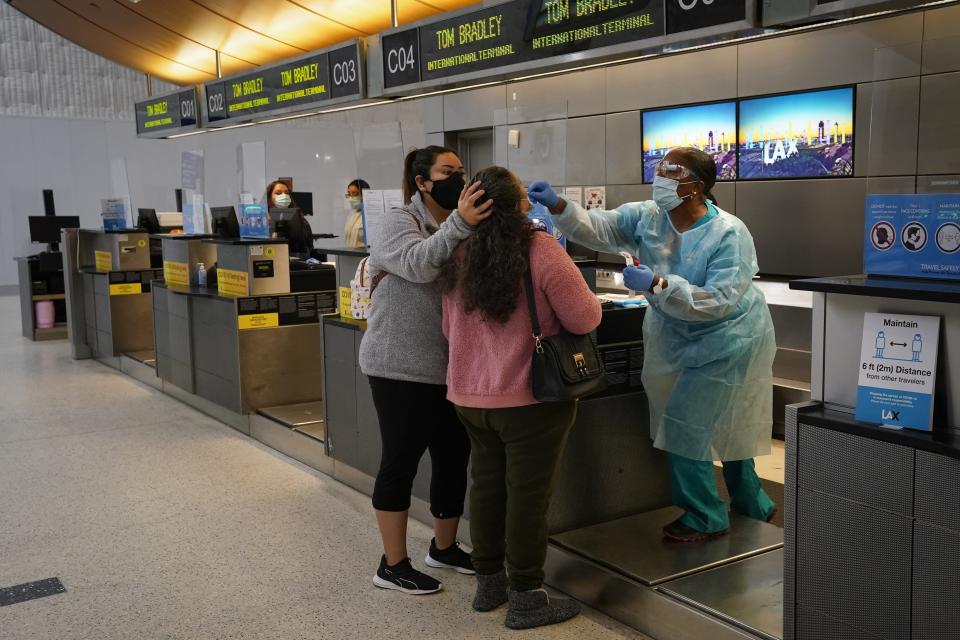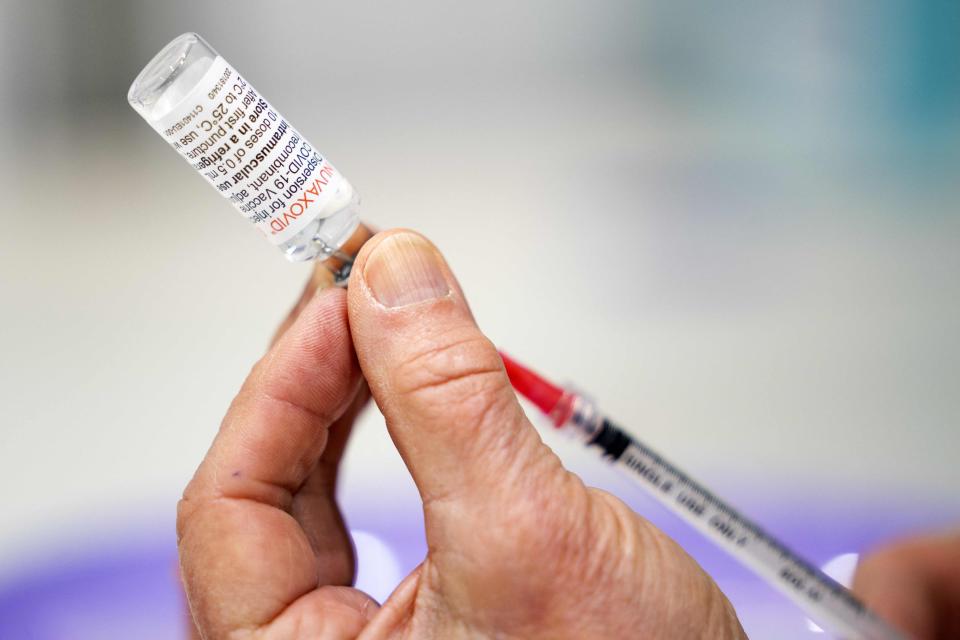COVID-19: Riverside County cases continue to rise; US to drop international testing requirement
COVID-19 cases in Riverside County continue to rise, but hospitalizations, so far, have not followed suit.
Riverside County added 1,352 new COVID-19 cases on Thursday and Friday. That's up nearly 36% from the previous week, when there were 997 cases reported on June 2 and 3.
Riverside County still has a low community transmission level of COVID-19, according to the Centers for Disease Control and Prevention. Under this level, people "may choose to mask at any time," but those with symptoms, a positive test or those who have been exposed to COVID-19 should wear a mask.
Surrounding regions, such as Imperial, Los Angeles, Orange, San Bernardino and San Diego counties, have a medium community transmission level. The Los Angeles Times reports that based on rising case and hospitalization numbers, Los Angeles County is on track to move into the high COVID-19 community level by early July, which would trigger another universal mask mandate for indoor public settings and on public transportation.
In Riverside County, though, hospitalizations have not substantially increased day-over-day. On Friday, there were 98 patients hospitalized. Patient numbers were at 101 on Wednesday and 102 on Thursday.
During this most recent increase in COVID-19 cases in the county, the most patients hospitalized on a single day, thus far, has been 104 on June 1. That's a far cry from the peak of 1,109 patients on Jan. 19 during the omicron surge.
No new deaths have been reported since Wednesday in Riverside County. There have been 6,539 deaths since the beginning of the pandemic, according to the dashboard.
In Riverside County, 59% of residents ages 5 and older have completed their primary vaccine series, which includes both shots of the Pfizer and Moderna vaccines or one shot of the Johnson & Johnson vaccine. About 28.5% of the population ages 5 and older has been boosted.

U.S. to drop COVID-19 testing requirement starting Sunday
The Biden administration announced Friday that the United States will no longer require a pre-departure COVID-19 test to enter the country starting Sunday.
The requirement will be lifted at 12:01 a.m. ET, according to a senior administration official. The rule change comes more than a year after the country started requiring a negative test for entry and more than two years since the pandemic began.
Under current entry requirements, air passengers must take a negative viral coronavirus test no more than one day before boarding their flight into the U.S. The rule applied to all travelers, regardless of vaccination status or citizenship, but grants exemptions to travelers 2 and older who had recently recovered from the virus.
The decision came, according to the official, as the Centers for Disease Control and Prevention has determined based on science that the requirement is no longer necessary. The decision will be reassessed in 90 days and the health agency plans to evaluate it on an ongoing basis.
If it becomes necessary to reinstate the pre-departure test requirement (in case of new, concerning variants, for example), the official continued, the CDC will plan to do so.
Requirements for travelers entering the U.S. by land or ferry remain unchanged: non-U.S. citizens, nationals and permanent residents can only enter if they are fully vaccinated. There is no testing requirement for land ports or ferry terminals.

FDA panel recommends Novavax COVID-19 vaccine be the fourth allowed for use in US
A federal advisory committee recommended Tuesday that a fourth COVID-19 vaccine, from Maryland-based company Novavax, be authorized for use in the United States.
The vaccine, which was supported by $1.8 billion in taxpayer funding, relies on a more traditional approach than the vaccines from Moderna and Pfizer-BioNTech, which have been used by more than three-quarters of Americans.
A third vaccine, from Johnson & Johnson, was used in more than 16 million people, but has been recommended as a second choice because of a side effect that's extremely rare but potentially lethal.
According to polling data, 73% of Americans want more vaccine choices.
Before the vaccine can become available, the head of the FDA must agree with the advisory panel that the benefits of Novavax's vaccine outweigh its risks. Then, a Centers for Disease Control and Prevention panel and the CDC's director must sign off on the vaccine. That process is likely to take a few weeks at least.
Novavax said it has millions of doses available and ready to be shipped once it receives authorization.
The Novavax vaccine would be authorized for use in adults only in two doses. The company submitted a request, which the FDA is considering, to provide the same vaccine as a booster dose.
In other vaccine news, children ages 6 months to under 5 may be eligible for vaccines as soon as June 21, if regulatory authorities sign off on the shots next week.
The vaccines would be identical to those provided to adults, but at a lower dose, one-tenth the adult dose for the Pfizer-BioNTech vaccine and one-quarter of the adult dose for the Moderna vaccine.
They will be available free at pharmacies across the country, but the Biden administration is also making a big push to make the vaccines accessible via pediatricians and primary care providers, children's museums, libraries, children's hospitals and health clinics.
Reporting from USA Today contributed to this report.
Ema Sasic covers entertainment and health in the Coachella Valley. Reach her at ema.sasic@desertsun.com or on Twitter @ema_sasic.
This article originally appeared on Palm Springs Desert Sun: COVID-19: Riverside County cases still rising, but hospitalizations stable

